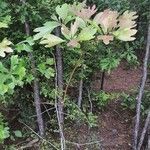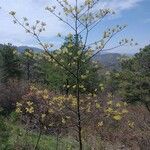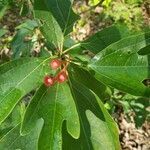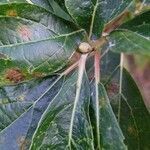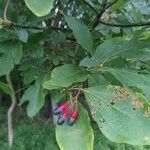| Therapeutic use
|
Anthelmintic (bark), Antidiarrheal (bark), Cold Remedy (bark), Dietary Aid (bark), Pediatric Aid (bark), Blood Medicine (bark), Tonic (bark), Analgesic (bark), Antiemetic (bark), Ceremonial Medicine (bark), Dermatological Aid (bark), Emetic (bark), Eye Medicine (bark), Febrifuge (bark), Gastrointestinal Aid (bark), Laxative (bark), Oral Aid (bark), Urinary Aid (bark), Dermatological Aid (leaf), Tonic (leaf), Antidiarrheal (root), Cold Remedy (root), Oral Aid (root), Blood Medicine (root), Misc. Disease Remedy (root), Anthelmintic (root), Febrifuge (root), Gynecological Aid (root), Hypotensive (root), Orthopedic Aid (root), Heart Medicine (root), Tonic (root), Dermatological Aid (root), Sedative (root), Antiemetic (root), Antirheumatic agents (root), Gout (root), Skin diseases (root), Eye Medicine (shoot), Anthelmintic (unspecified), Antirheumatic (Internal) (unspecified), Blood Medicine (unspecified), Dermatological Aid (unspecified), Eye Medicine (unspecified), Misc. Disease Remedy (unspecified), Venereal Aid (unspecified), Unspecified (unspecified), Hemostat (unspecified), Hypotensive (unspecified), Tonic (unspecified), Burn Dressing (unspecified), Stimulant (unspecified), Analgesic (unspecified), Antidiarrheal (unspecified), Antiemetic (unspecified), Cathartic (unspecified), Cold Remedy (unspecified), Cough Medicine (unspecified), Gastrointestinal Aid (unspecified), Other (unspecified), Pediatric Aid (unspecified), Throat Aid (unspecified), Urinary Aid (unspecified), Alterative (unspecified), Anodyne (unspecified), Antiseptic (unspecified), Astringent (unspecified), Bronchitis (unspecified), Cancer (unspecified), Carminative (unspecified), Catarrh (unspecified), Demulcent (unspecified), Dentifrice (unspecified), Depurative (unspecified), Diaphoretic (unspecified), Diuretic (unspecified), Dysentery (unspecified), Emmenagogue (unspecified), Fatality (unspecified), Gout (unspecified), Repellant(Insect) (unspecified), Kidney (unspecified), Massage (unspecified), Medicine (unspecified), Mouthwash (unspecified), Pediculicide (unspecified), Perfume (unspecified), Respiratory (unspecified), Rheumatism (unspecified), Rubefacient (unspecified), Scurvy (unspecified), Skin (unspecified), Sore (unspecified), Sudorific (unspecified), Swelling (unspecified), Syphilis (unspecified), Tea (unspecified), Toothache (unspecified), Viricide (unspecified), Weaning (unspecified), Cold (unspecified), / (unspecified), Carcinogenic (unspecified), Dentistry (unspecified), Eye (unspecified), Fungicide (unspecified), Hypertension (unspecified)
|
